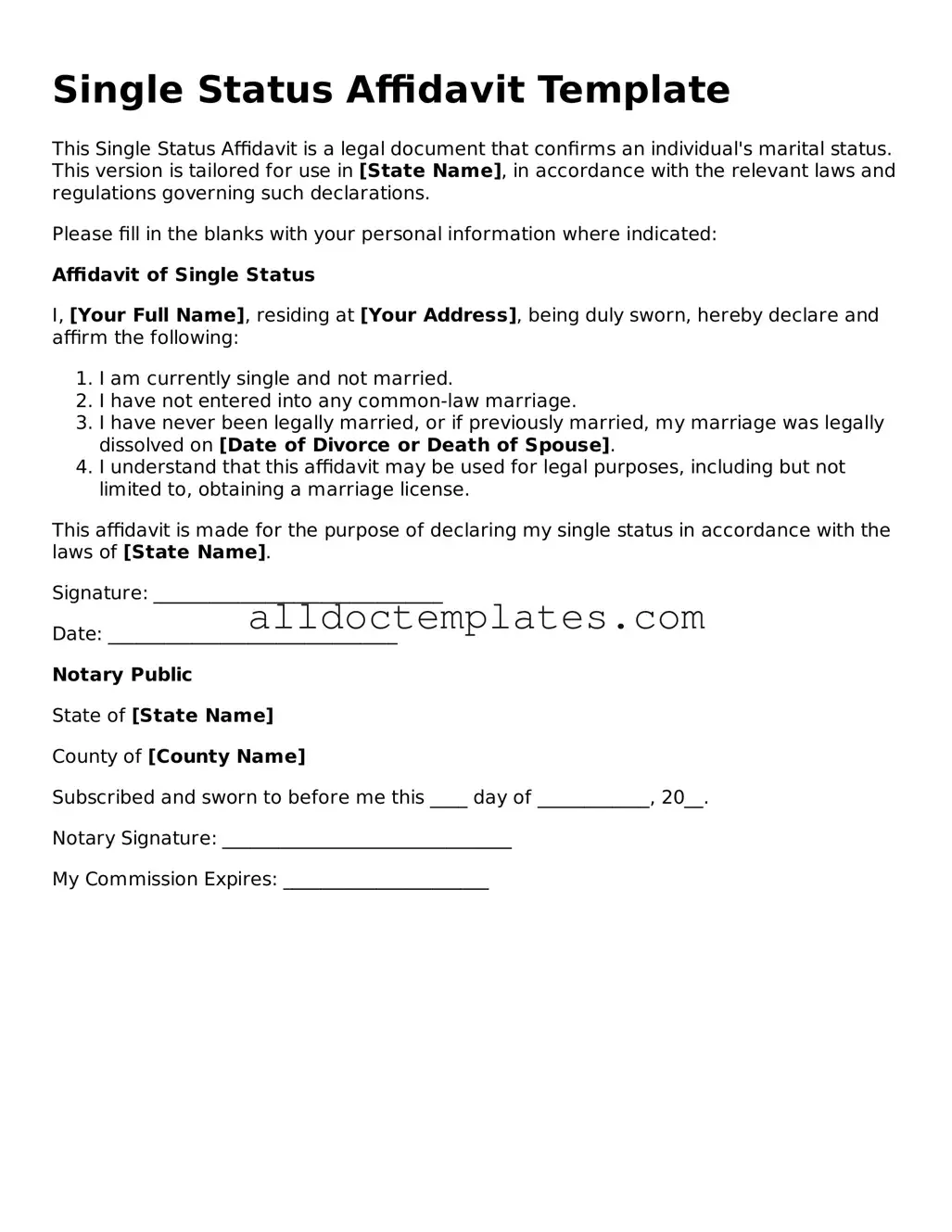Single Status Affidavit Template
This Single Status Affidavit is a legal document that confirms an individual's marital status. This version is tailored for use in [State Name], in accordance with the relevant laws and regulations governing such declarations.
Please fill in the blanks with your personal information where indicated:
Affidavit of Single Status
I, [Your Full Name], residing at [Your Address], being duly sworn, hereby declare and affirm the following:
- I am currently single and not married.
- I have not entered into any common-law marriage.
- I have never been legally married, or if previously married, my marriage was legally dissolved on [Date of Divorce or Death of Spouse].
- I understand that this affidavit may be used for legal purposes, including but not limited to, obtaining a marriage license.
This affidavit is made for the purpose of declaring my single status in accordance with the laws of [State Name].
Signature: _______________________________
Date: _______________________________
Notary Public
State of [State Name]
County of [County Name]
Subscribed and sworn to before me this ____ day of ____________, 20__.
Notary Signature: _______________________________
My Commission Expires: ______________________
